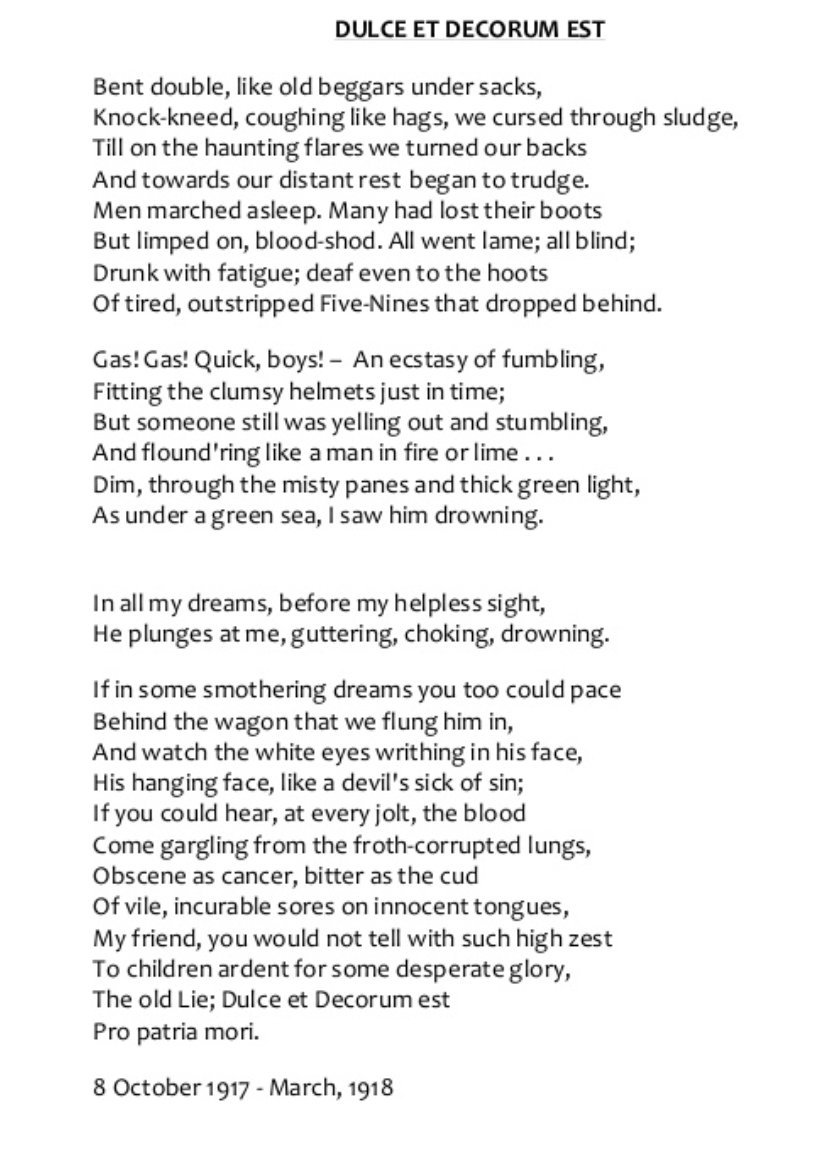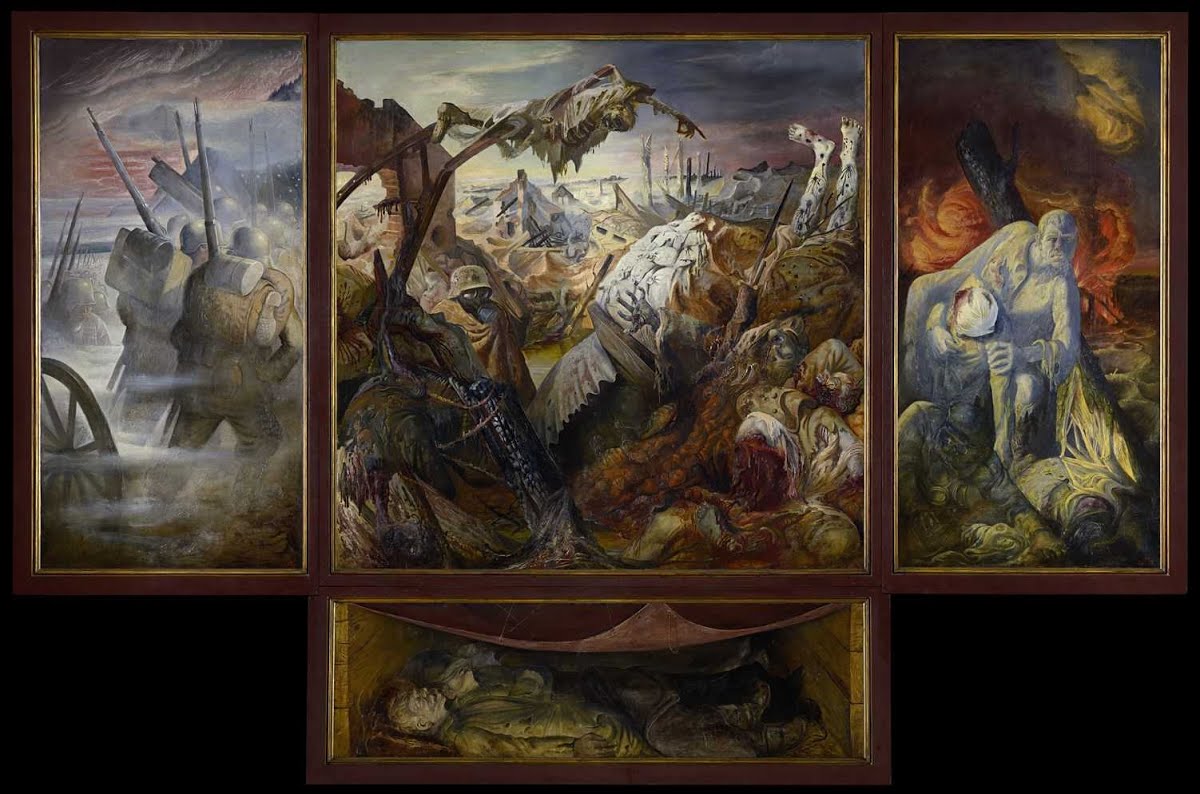Lesson 8 - 1915 - The Battle of Ypres
The First World War was the first modern 'total war', a war that involved all sections of society contributing to the war effort. Millions of young men were conscripted to fight and endure horrors of trench warfare that lasted four years. Amongst those who fought were many young artists and writers who used their creativity to attempt to make sense of the carnage. Here I have chosen two examples - a poet and painter from either side of the trenches - to represent the art of the First World War.
Dulce et Decorum Est - Wilfred Owen
The second Battle of Ypres in 1915 was significant because it marked the first use of poison gas - chlorine in this case - as a weapon of war. The Anglo-Welsh poet Wilfred Owen wrote one of the most famous English poems of the 20th century about the experience of a gas attack. It continues to be regularly taught in English and history lessons around the world. In November 1918 he was killed in action at the age of 25, just one week before the Armistice.
The second Battle of Ypres in 1915 was significant because it marked the first use of poison gas - chlorine in this case - as a weapon of war. The Anglo-Welsh poet Wilfred Owen wrote one of the most famous English poems of the 20th century about the experience of a gas attack. It continues to be regularly taught in English and history lessons around the world. In November 1918 he was killed in action at the age of 25, just one week before the Armistice.
Der Krieg (Dresden War Triptych) - Otto Dix
|
|
Otto Dix was a German artist. He joined the war as a machine gunner on the Western Front in 1915 and fought at the the Battle of the Somme in 1916. Although unlike Owen he survived the war - he died in 1969 - like many he was traumatised by the experience. He produced a number of sketches and paintings that depicted the horrors of the First World War, the most important was entitled Der Krieg. The format of the work and its composition are based on religious triptychs (three panels) of the Renaissance. In the 1930s, Otto Dix was rejected by the Nazis and his work was exhibited at the infamous degenerate art exhibition in 1937. |
The Google Arts and Culture App has an exhibition of the painting which allows you to use your phone or iPad to view the painting in augmented reality, as if you were seeing the painting for real. Click here to access it.
|
|
|
Activity
With reference to the two examples of art we have examined in this case study, explain carefully how far the art produced during the First World War is useful as evidence about the experience of the war by those who fought in it.
Consider the following questions when developing your answer:
With reference to the two examples of art we have examined in this case study, explain carefully how far the art produced during the First World War is useful as evidence about the experience of the war by those who fought in it.
Consider the following questions when developing your answer:
- Who were these artists? What had they experienced?
- What can we learn about the war from the artists? What can the artists express about the war that historians cannot?
- Can you think of any limitations with these artistic sources?


